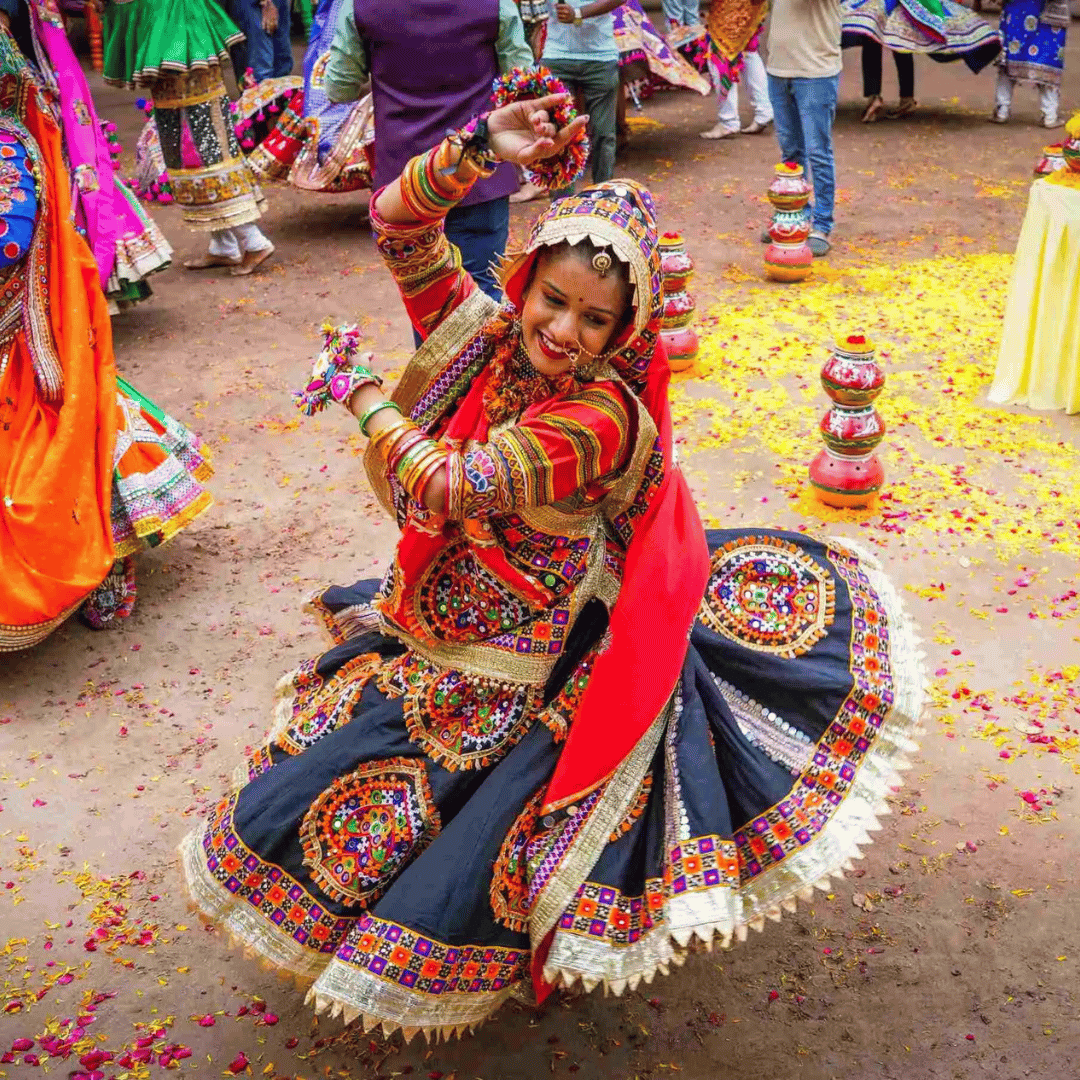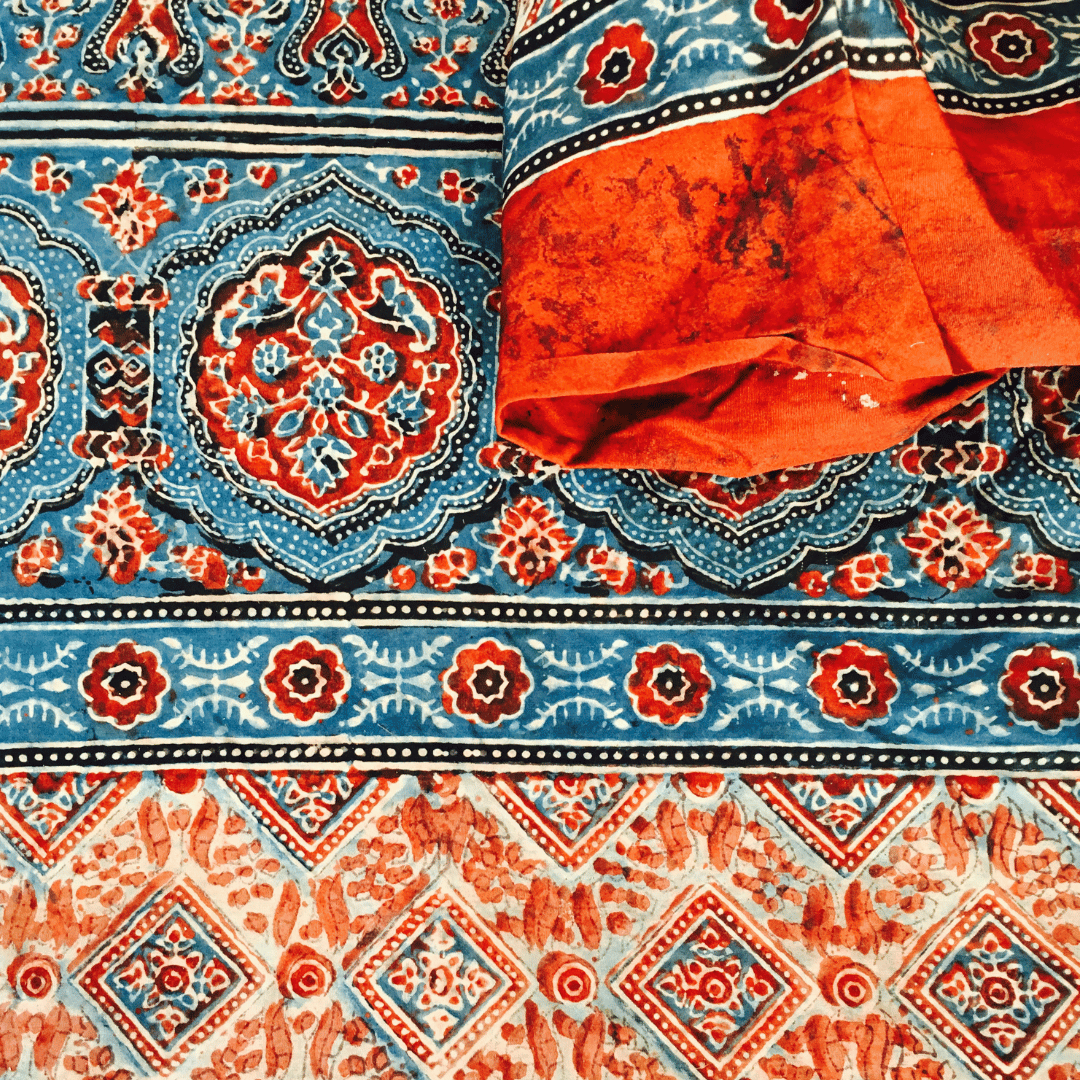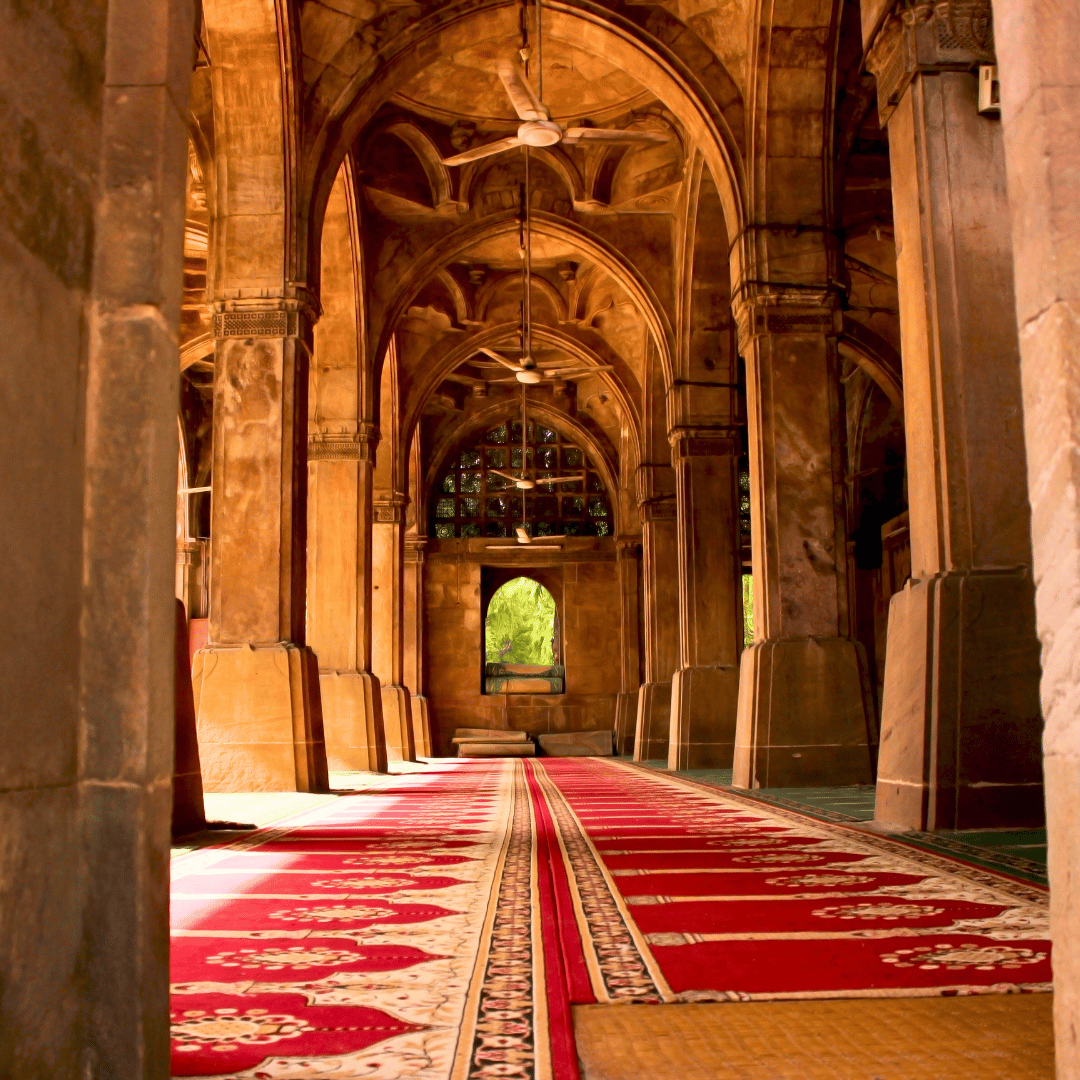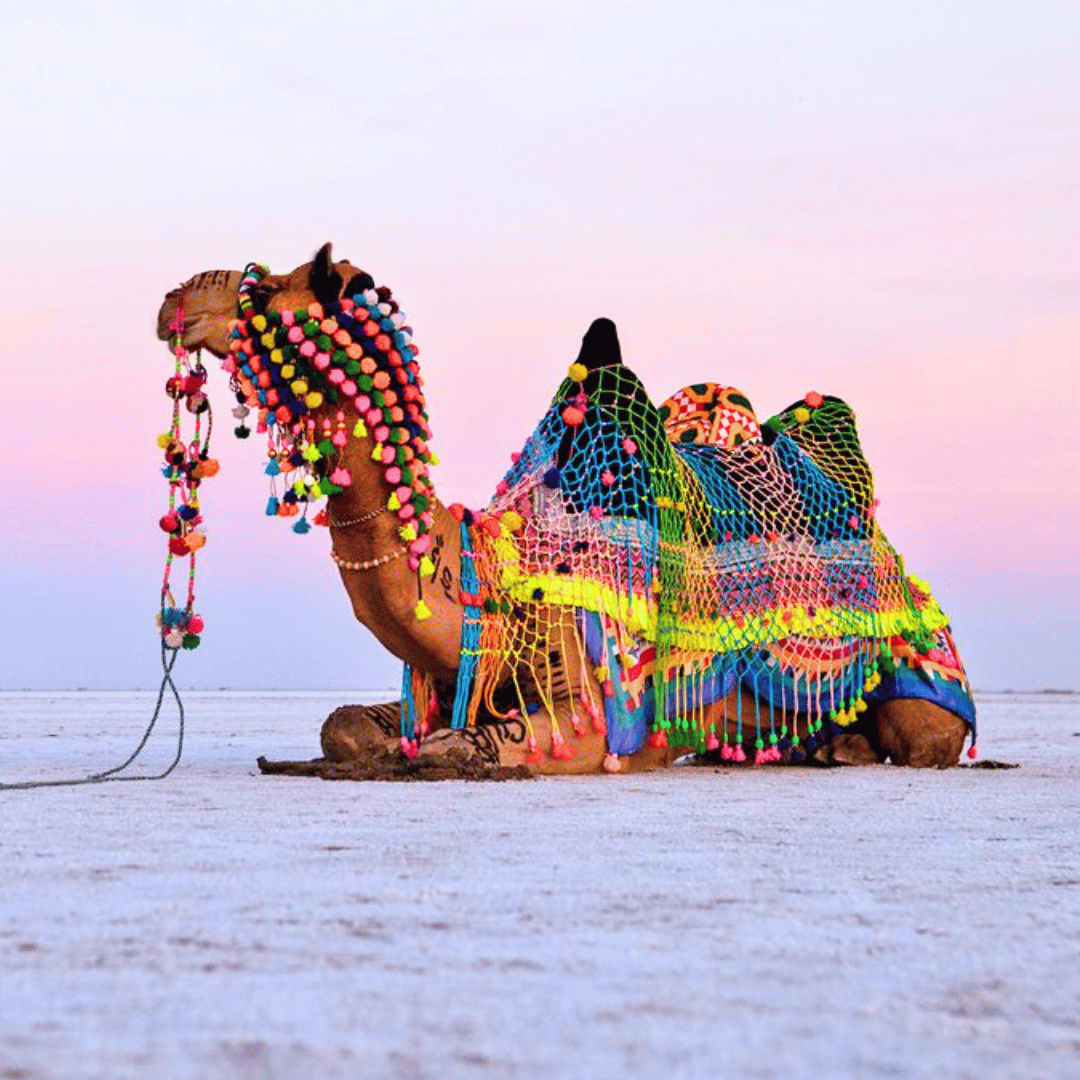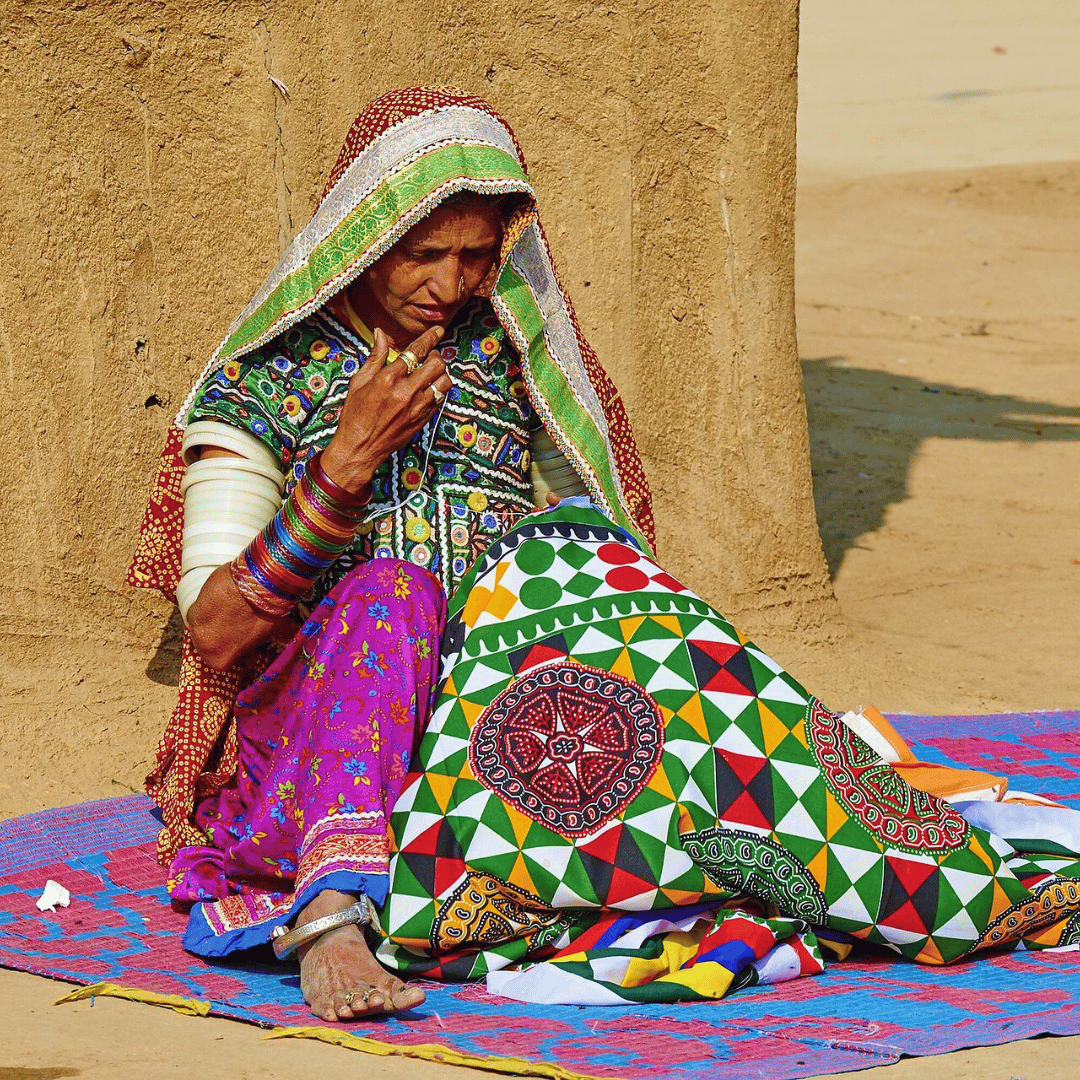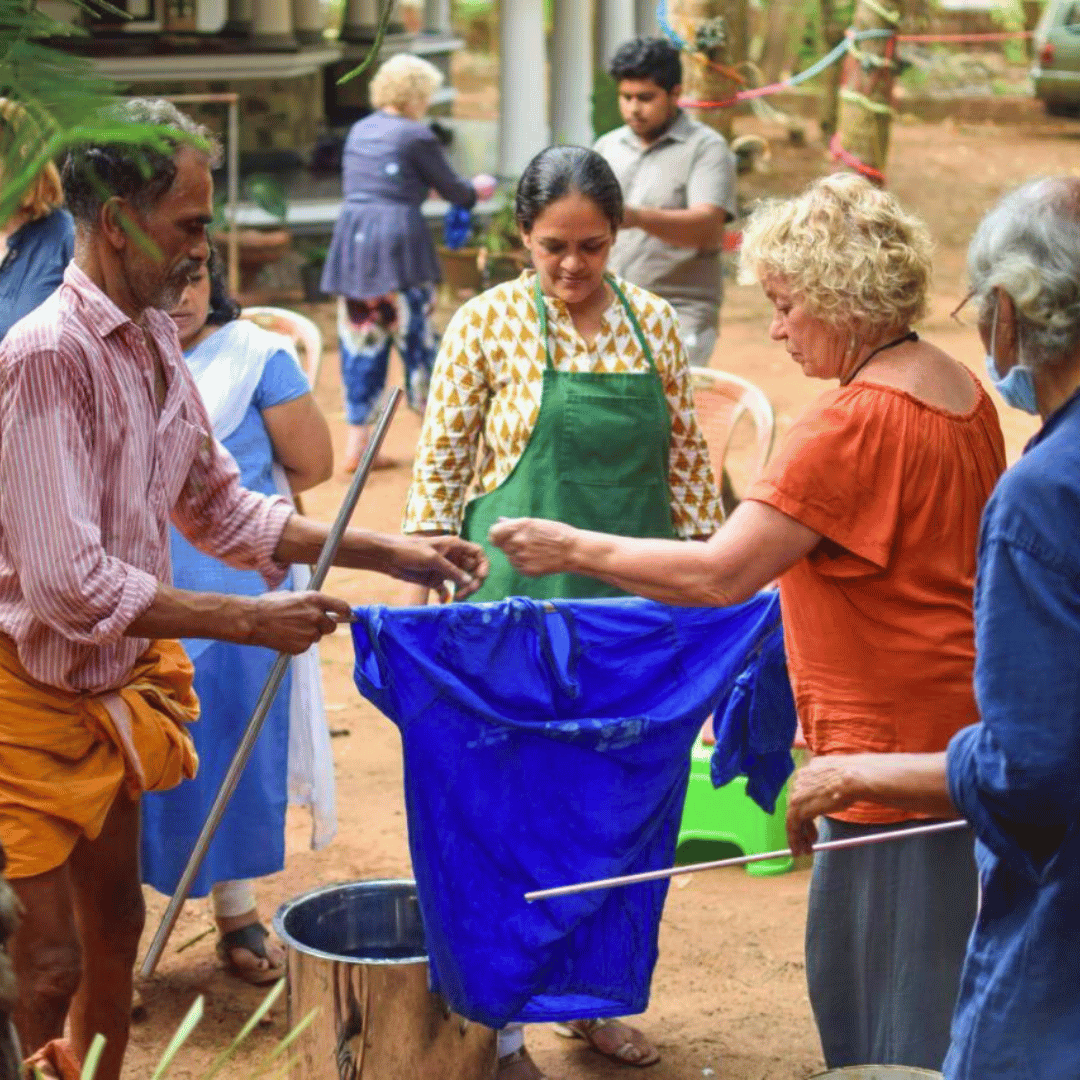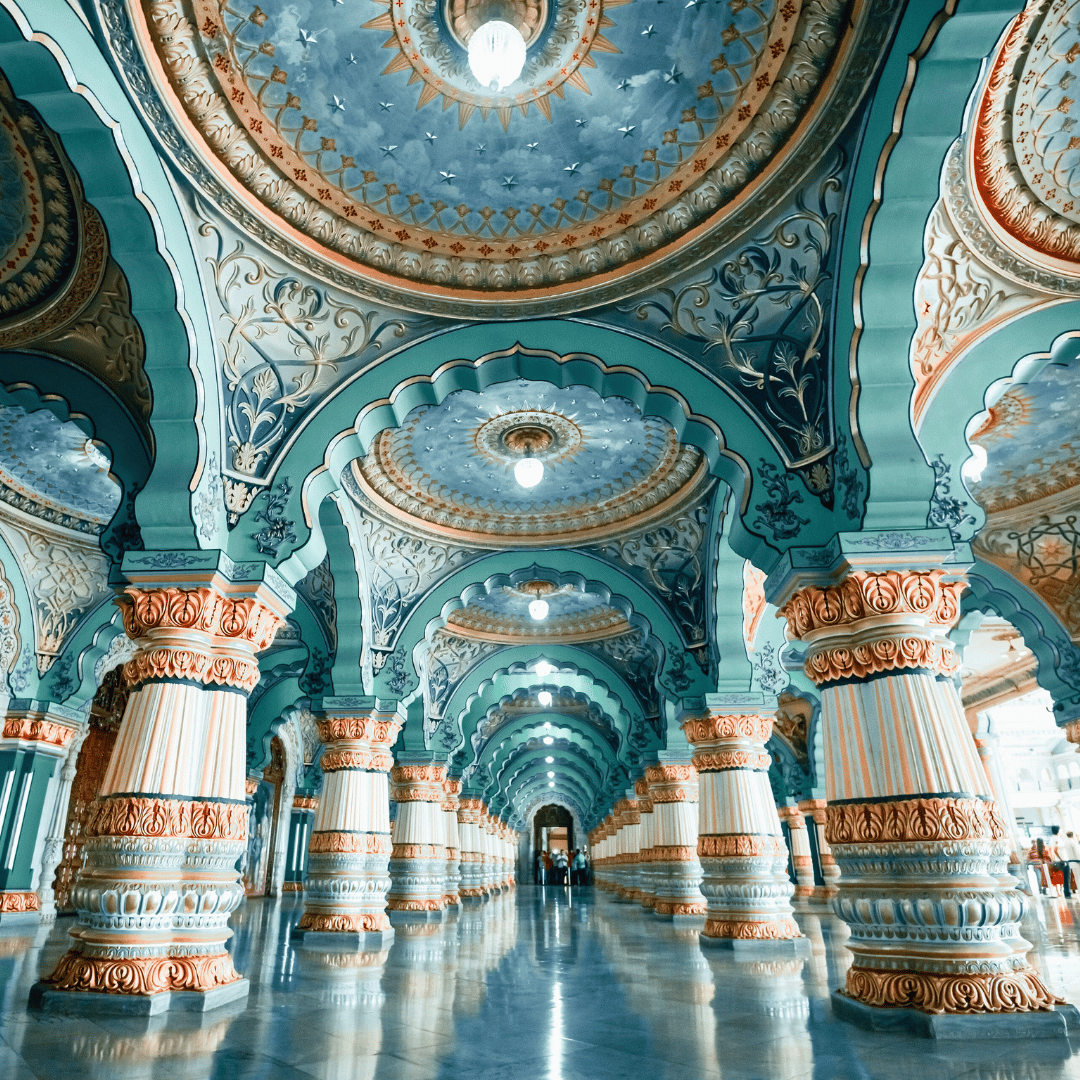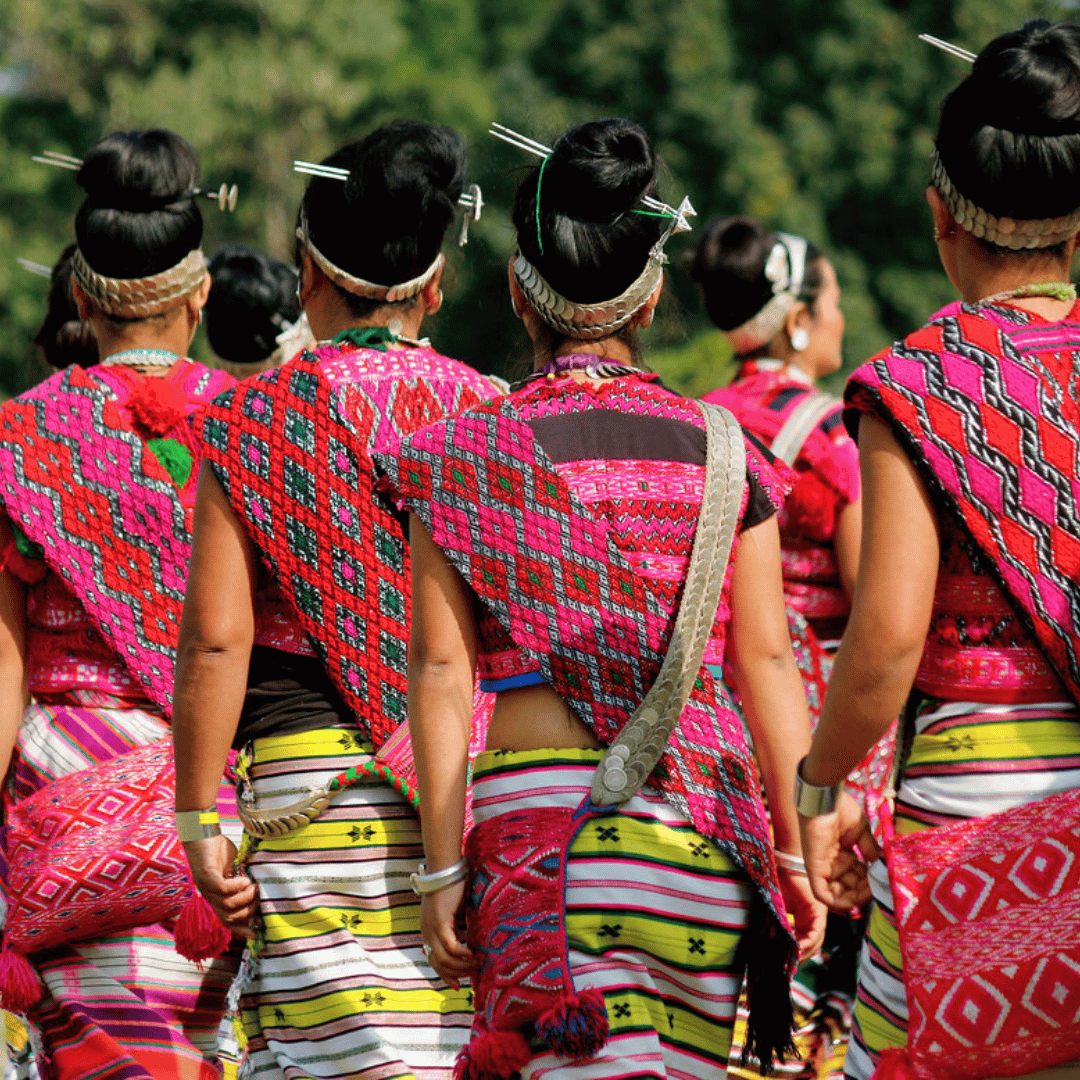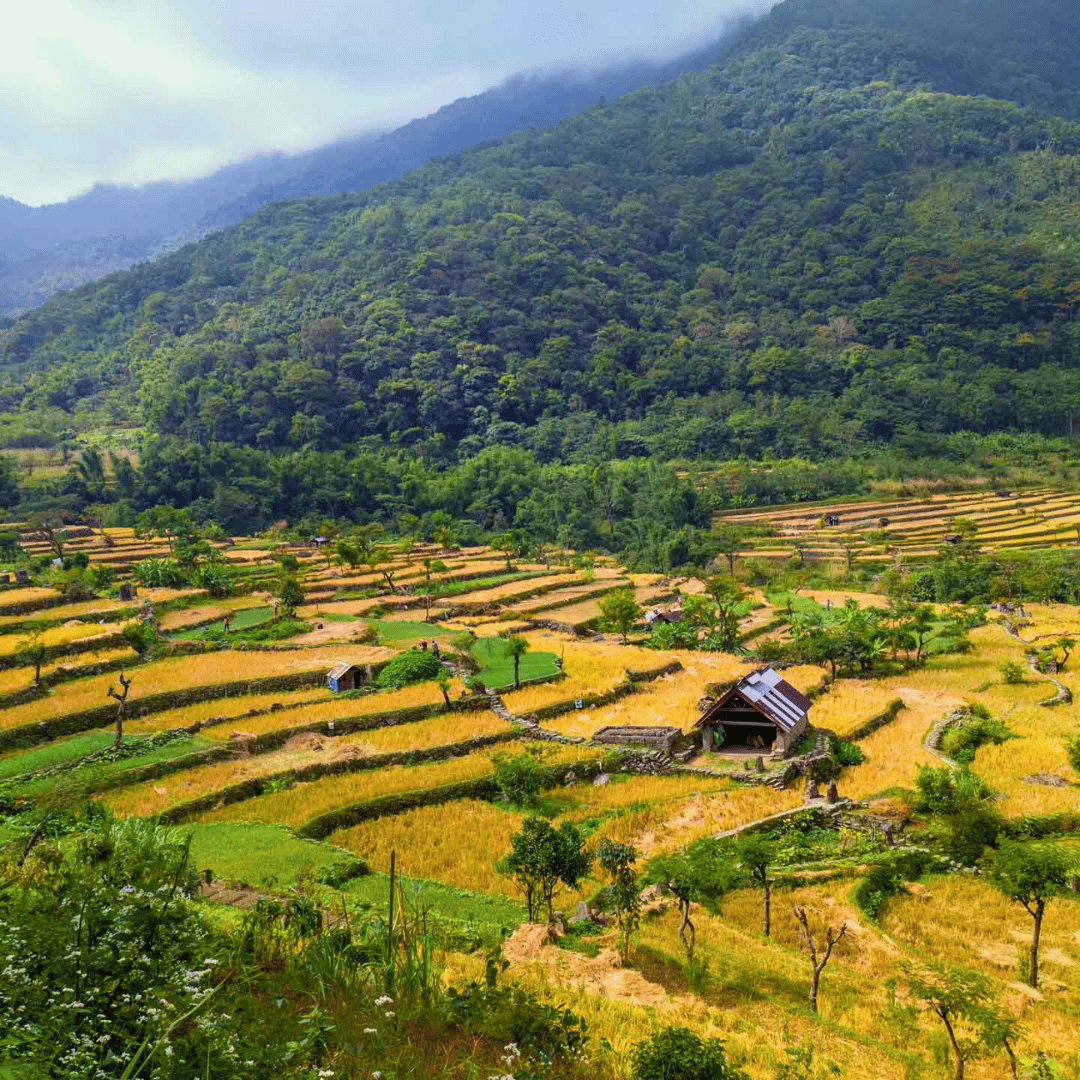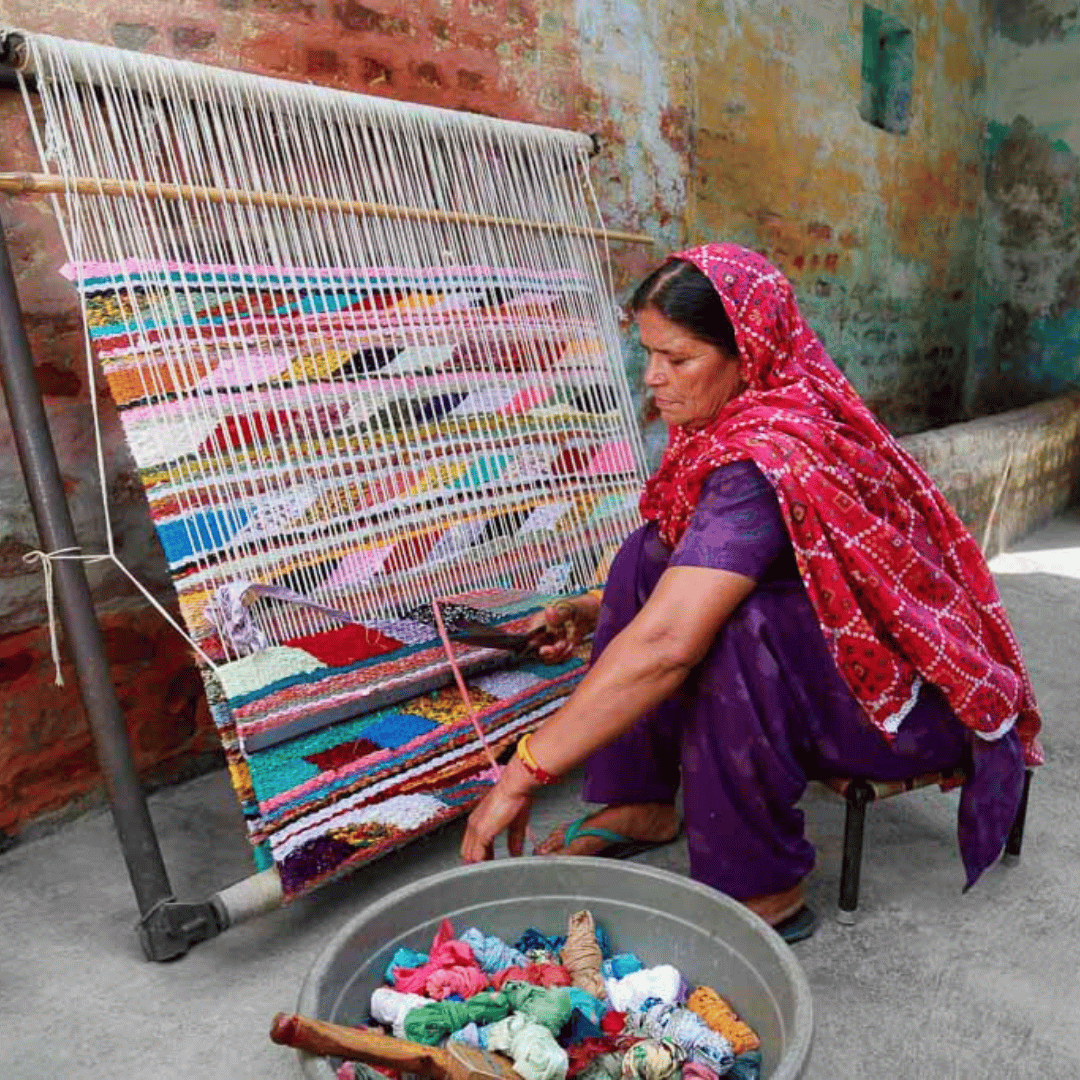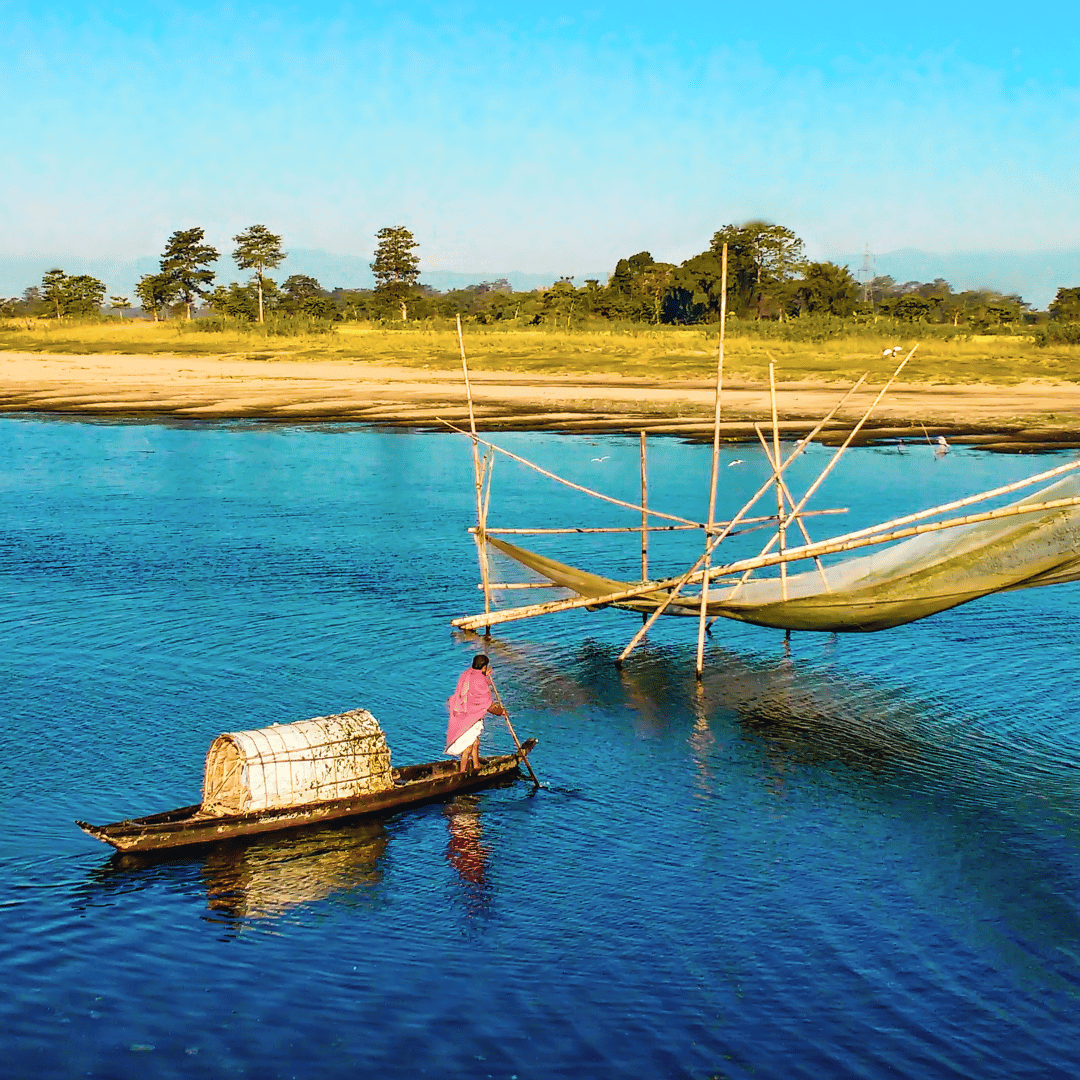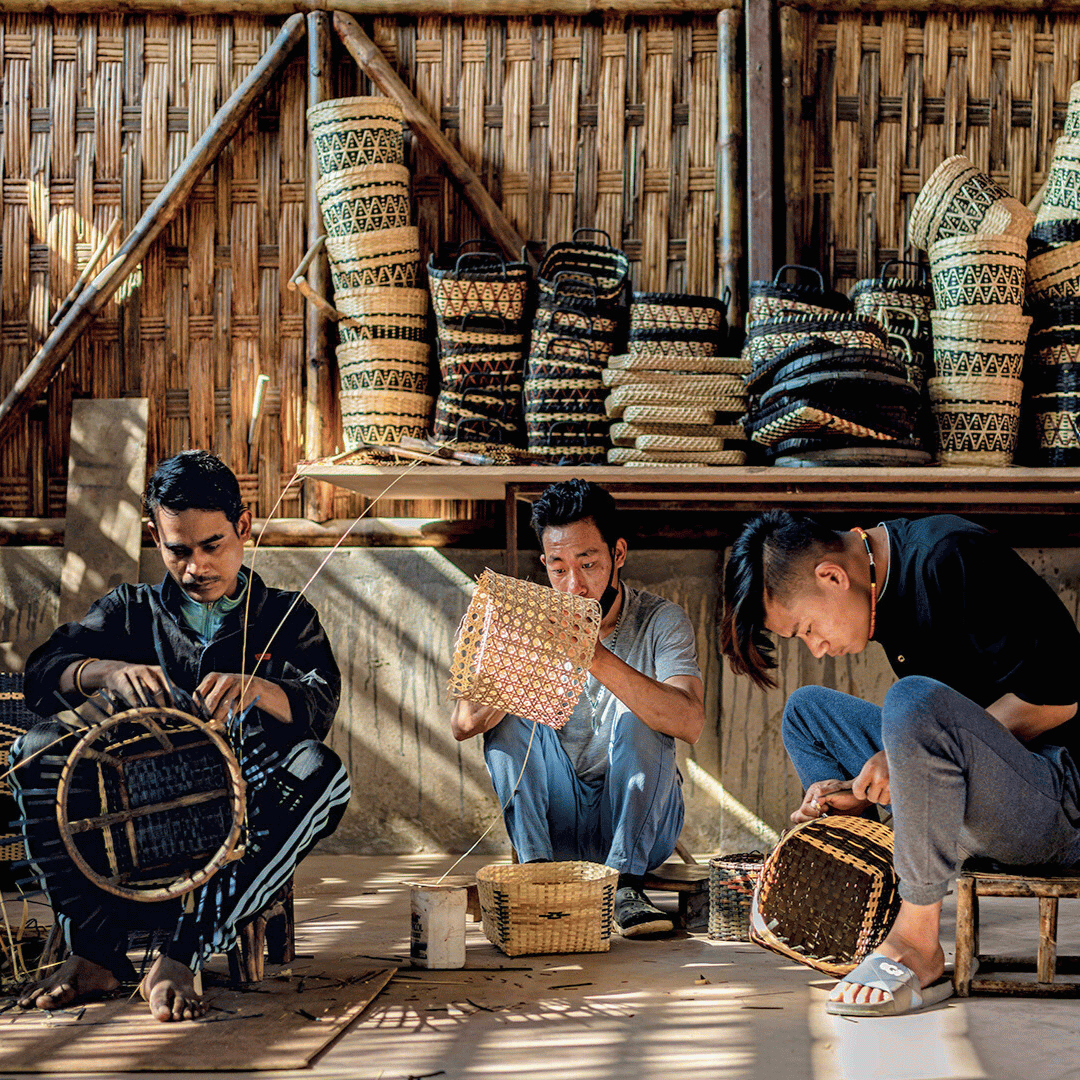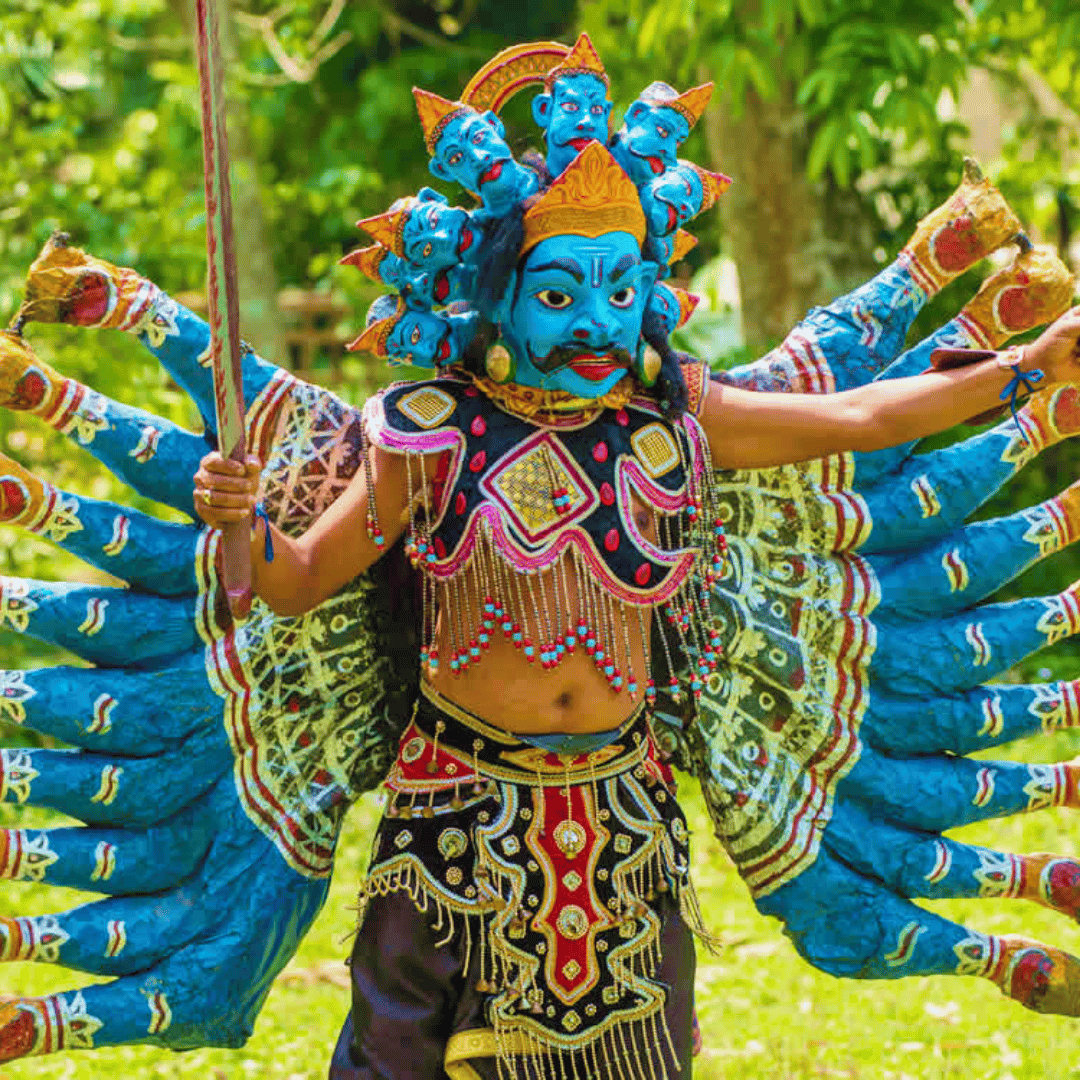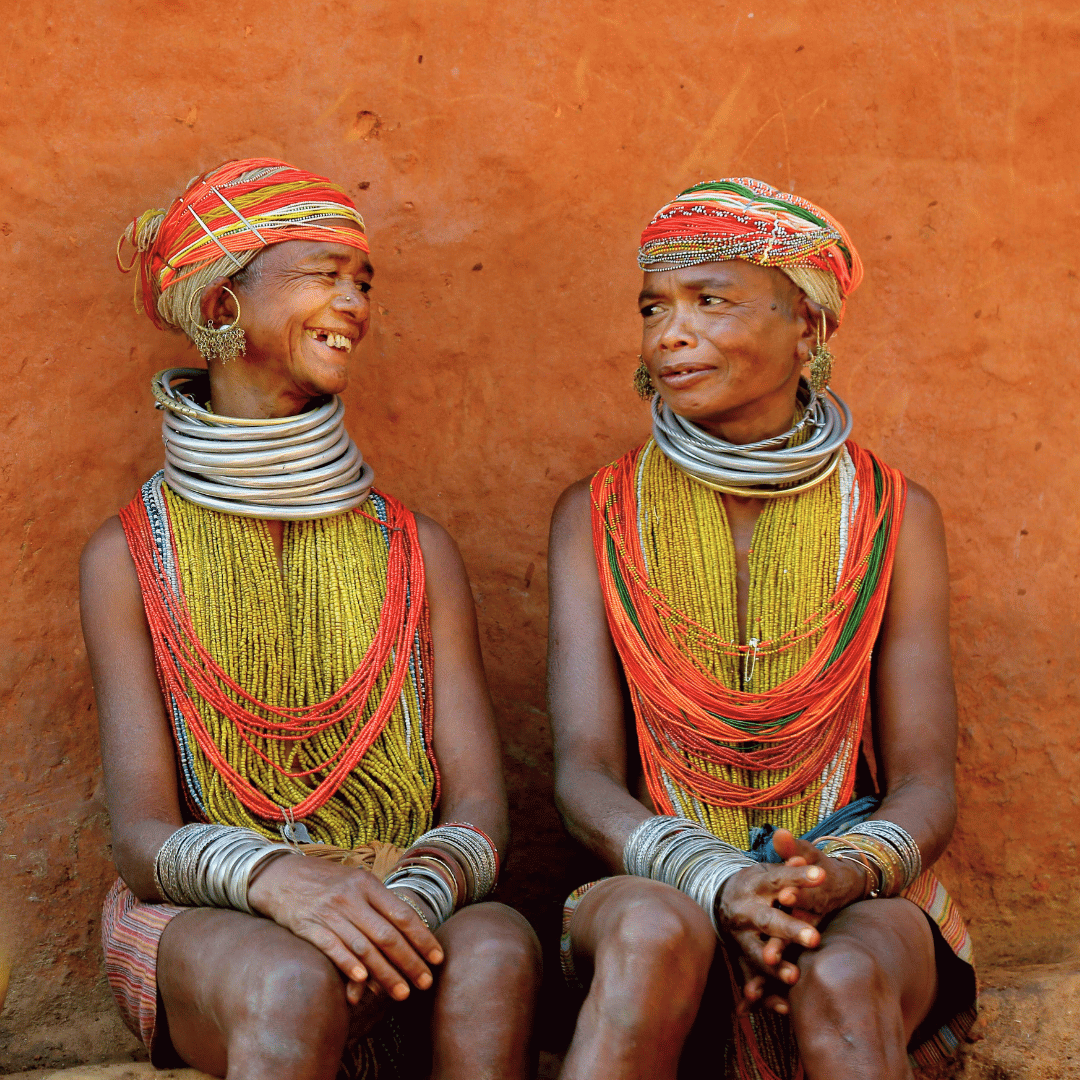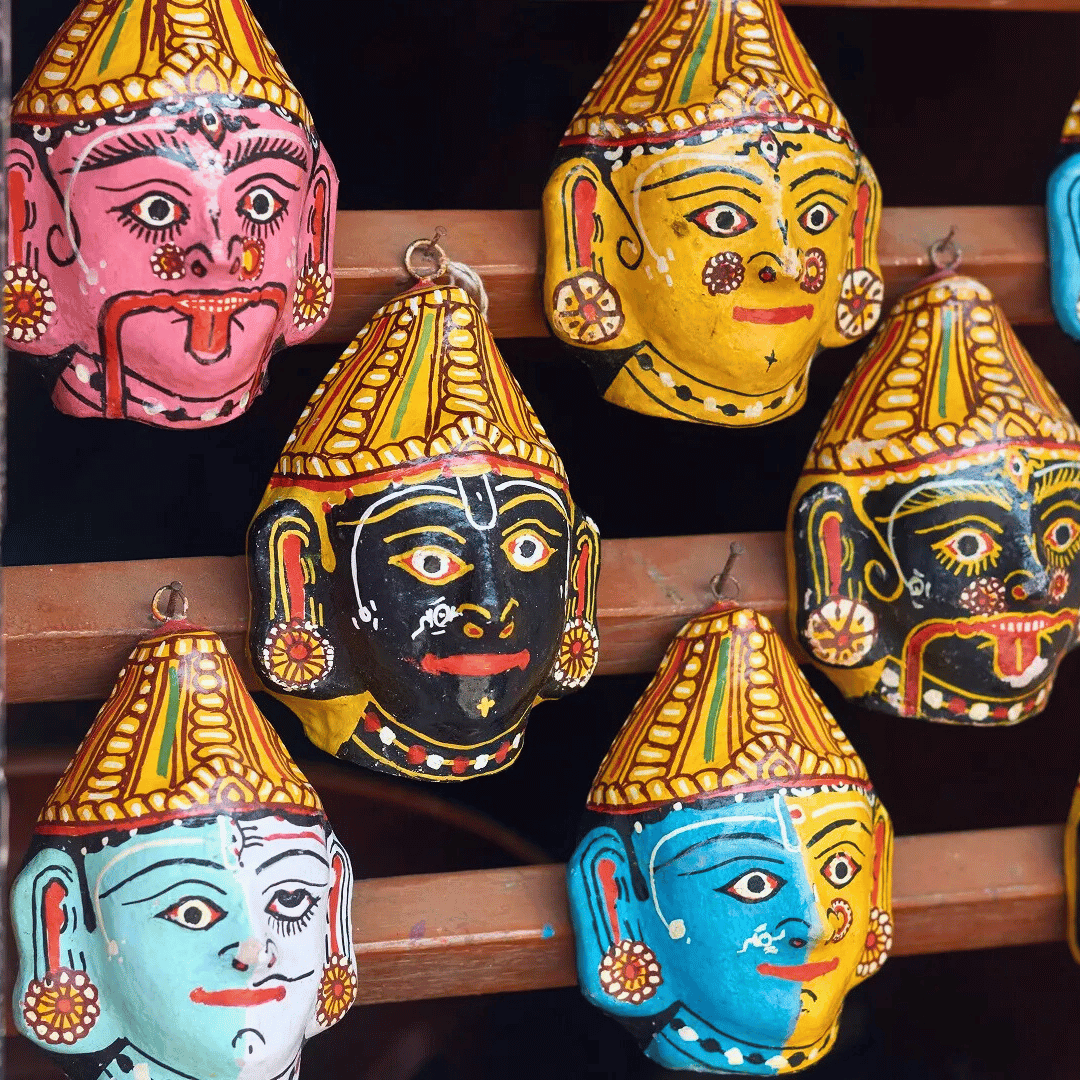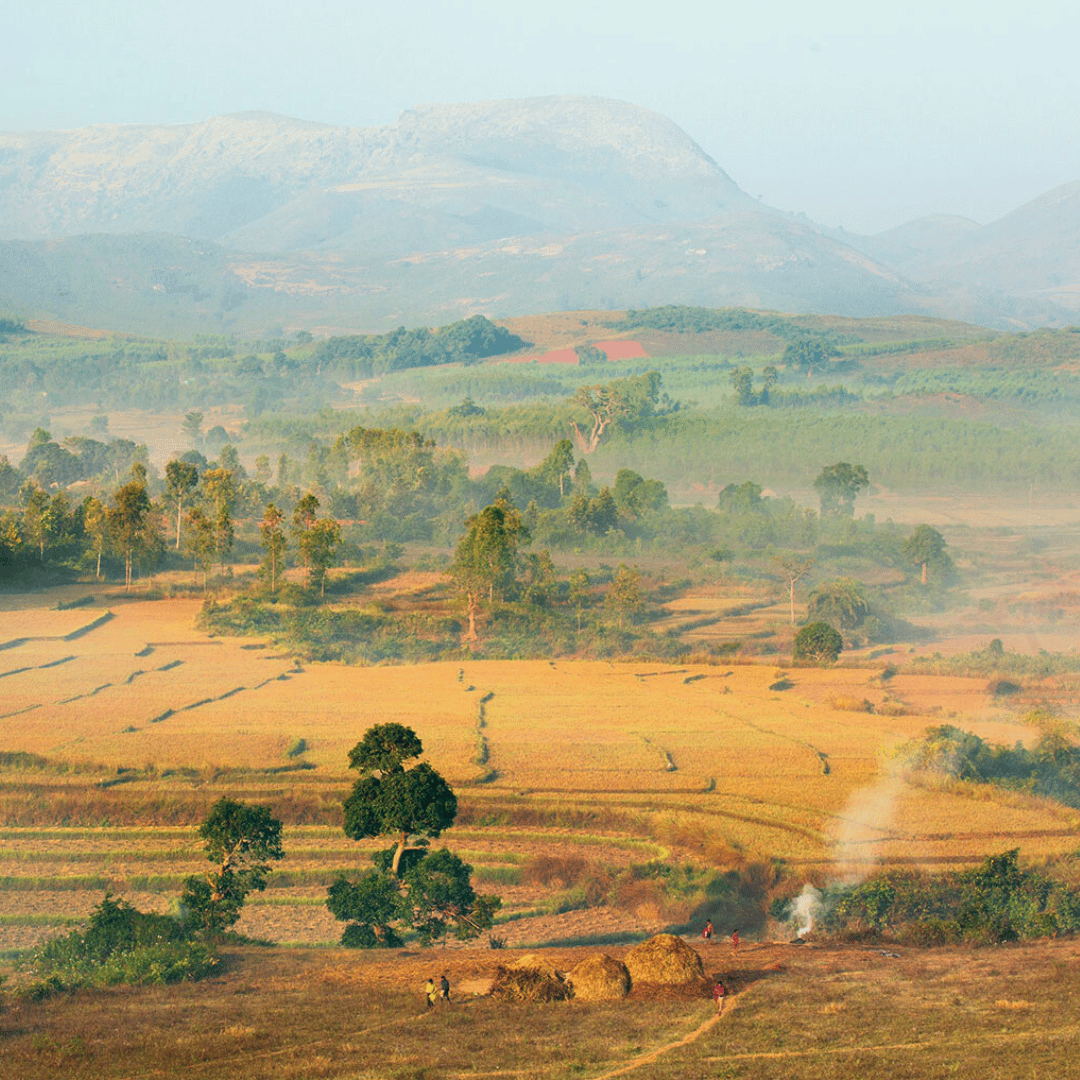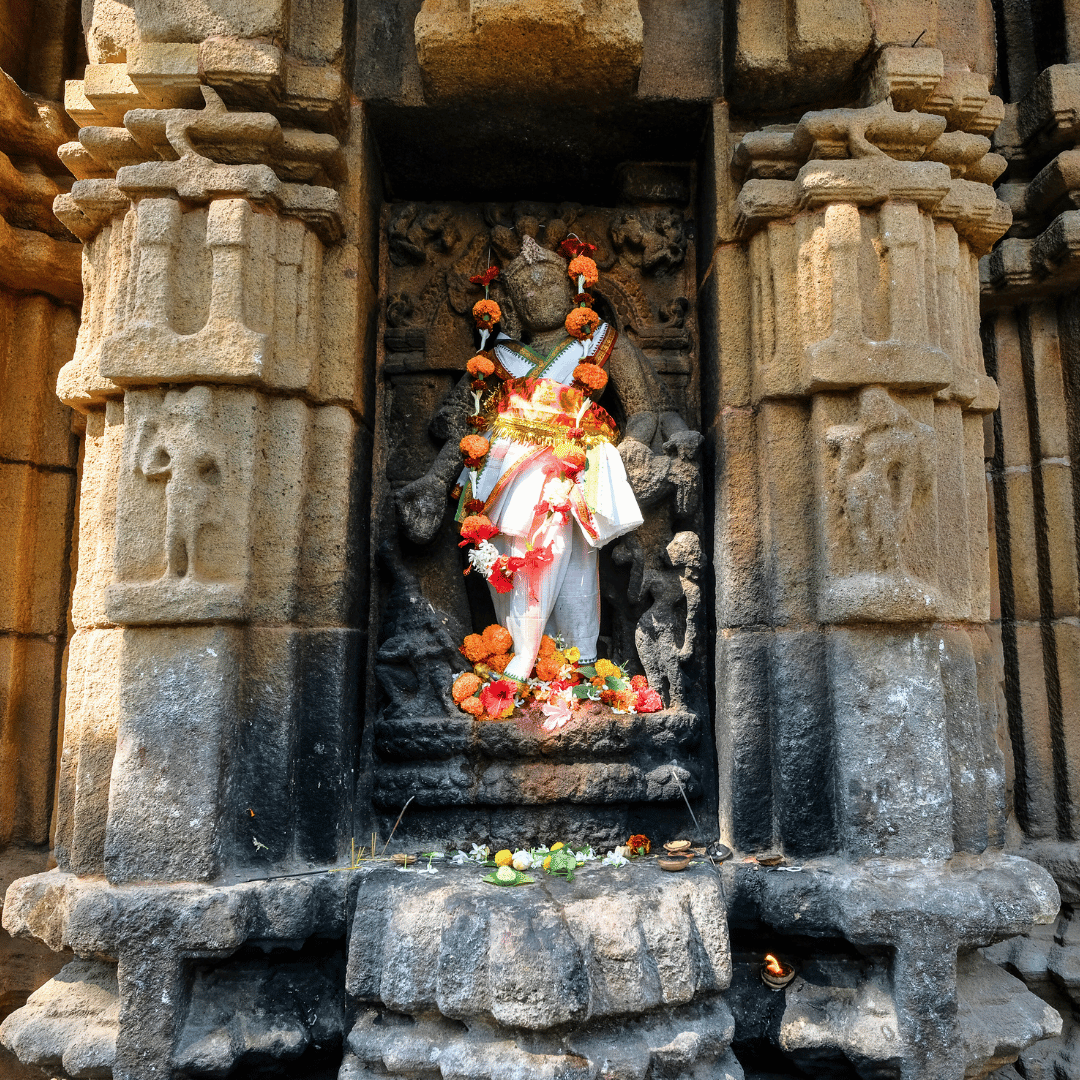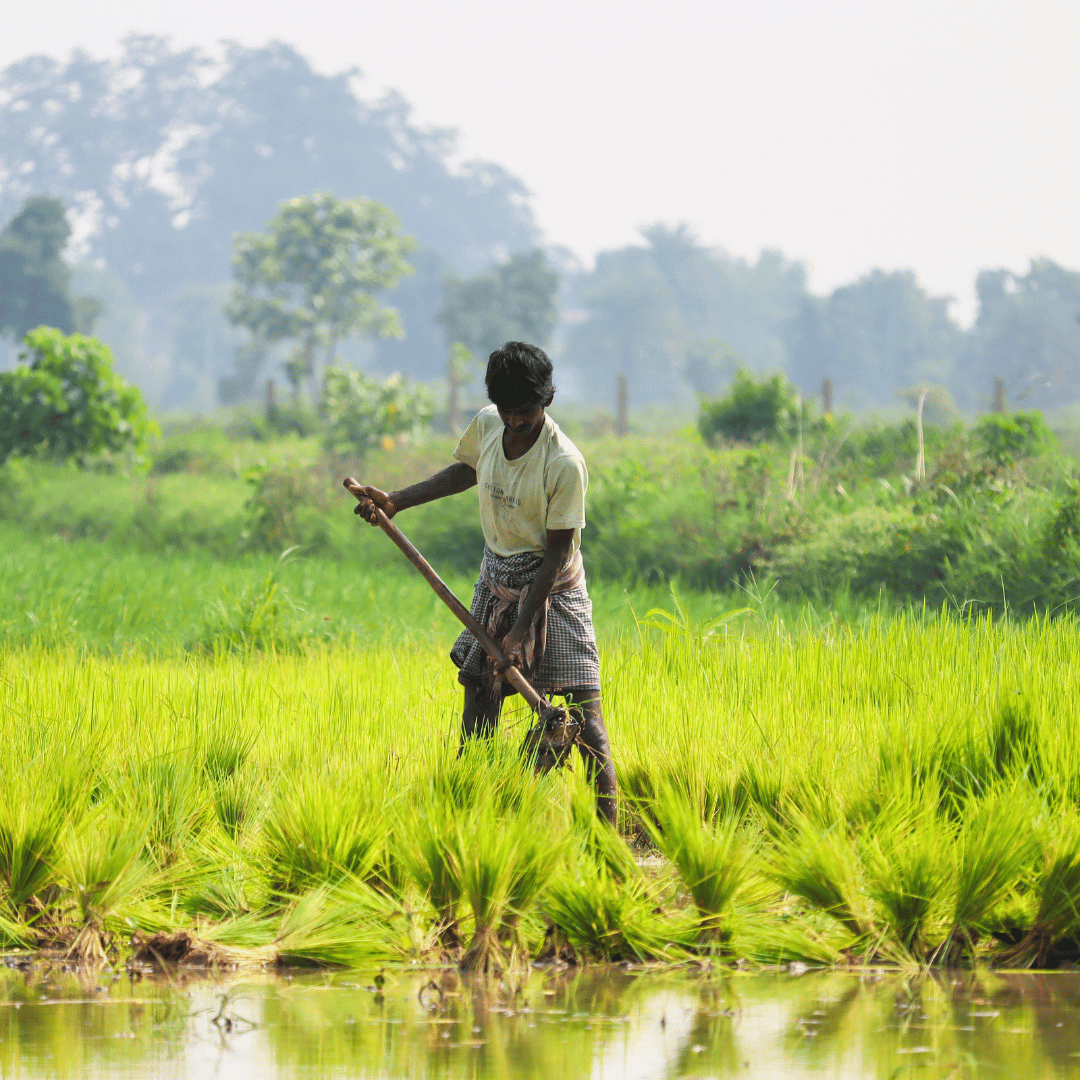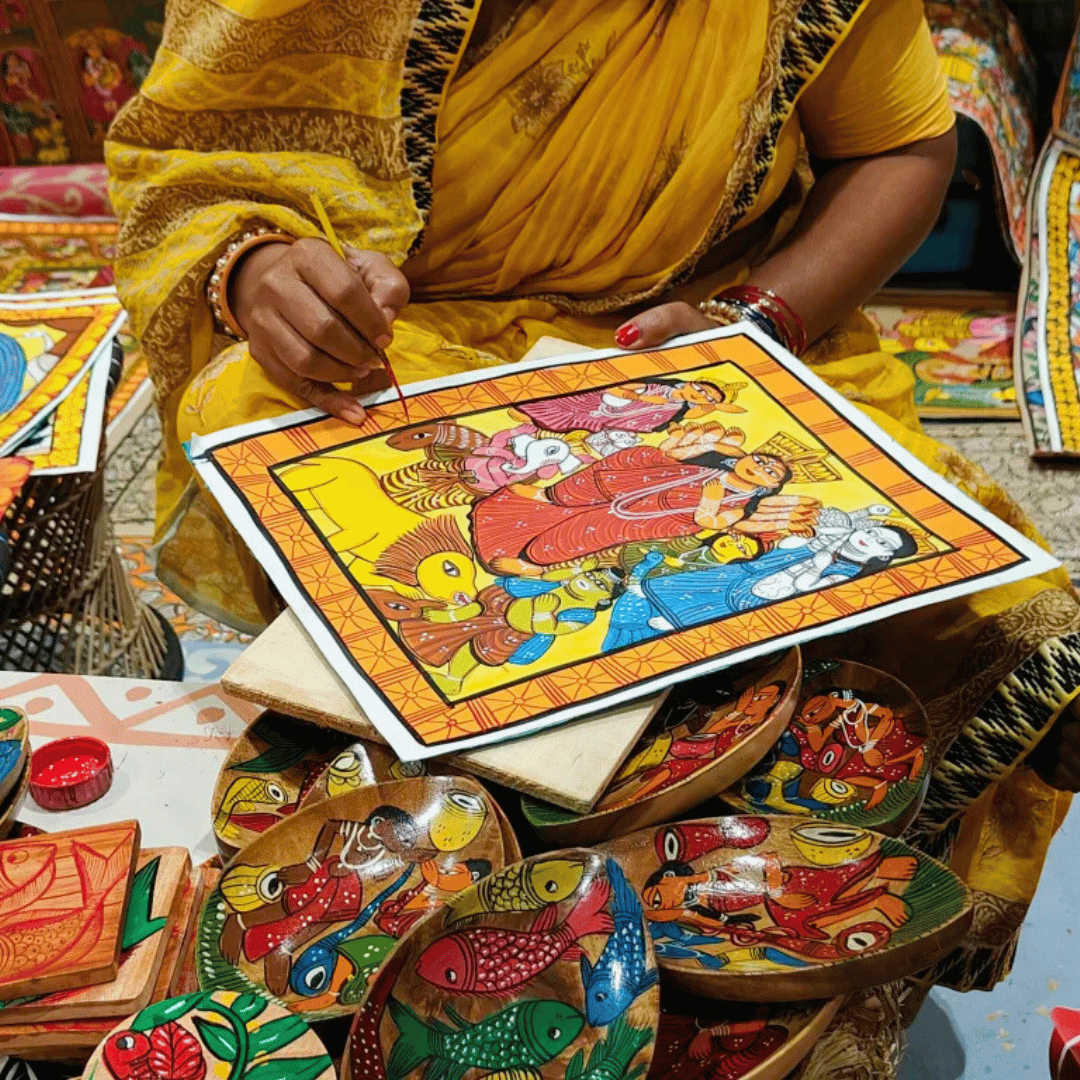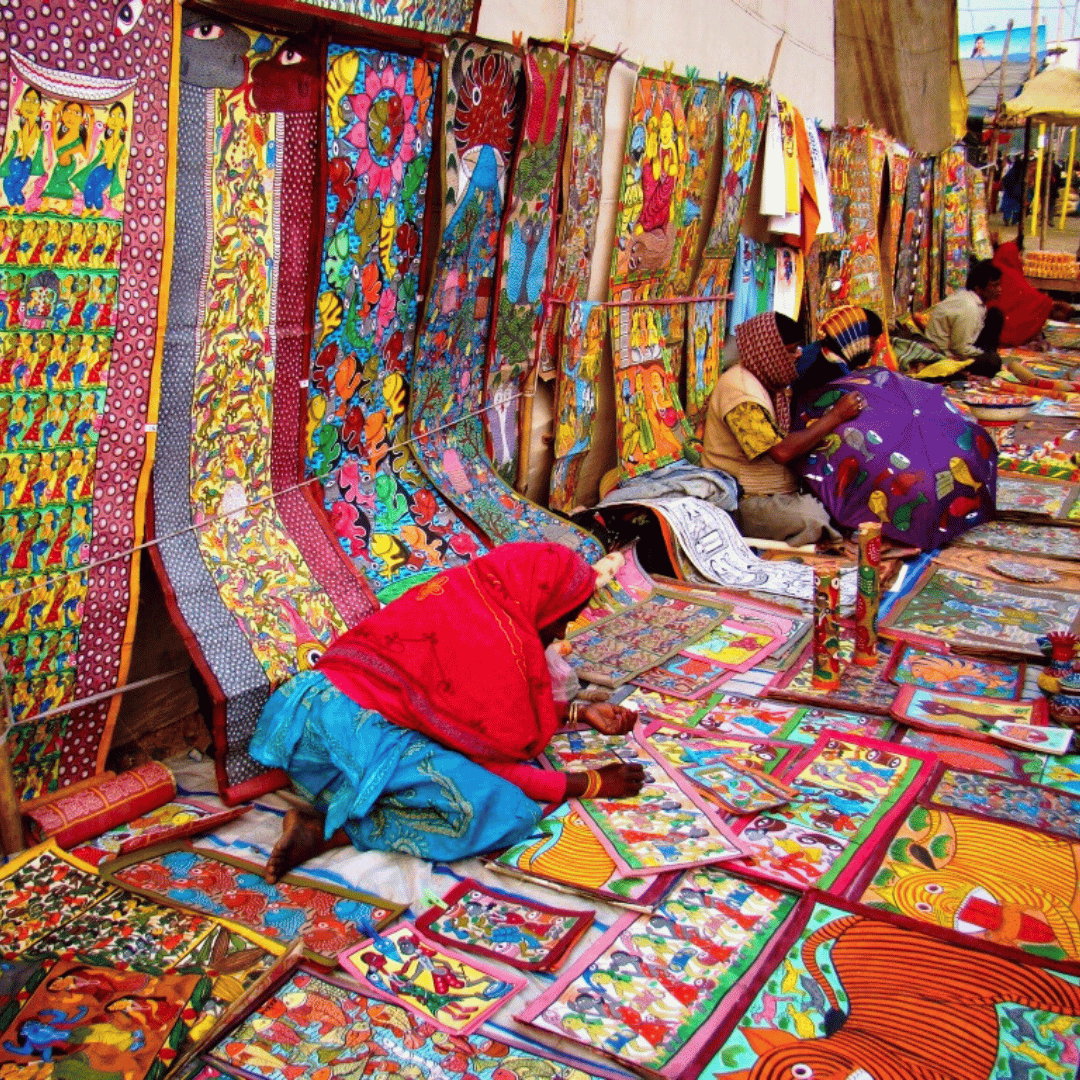North India Textile Tour Itinerary
-
Welcome to India! Arrive in Mumbai, where you will be met at the airport and transferred to your hotel. Formerly known as Bombay, Mumbai is India’s commercial powerhouse, a vibrant and dynamic city brimming with energy.
Beyond its role as an economic hub, it is also a major centre for theatre, art, music, and dance, reflecting the country’s rich cultural diversity. The city’s colonial past is evident in its weathered Victorian mansions - some still privately owned - and its grand public buildings, many of which are beautifully illuminated at night, serving as enduring reminders of the British Raj.
Despite its deep historical roots, Mumbai is a place where tradition and modernity thrive side by side. Traditional street markets sit alongside gleaming skyscrapers, and historic neighbourhoods coexist with bustling business districts, showcasing the city’s rapid evolution and unstoppable momentum.
-
This morning, you will be met at your hotel and transferred to the airport for your flight to Bhuj. On arrival, you will be greeted and transferred to your hotel.
Later, set out on a guided tour to explore Bhuj, the historic walled city that serves as the headquarters of the Kutch district. Named after the Bhujia Fortress, which stands on a nearby hill overlooking the city, Bhuj is best known for its exceptional handicrafts. The region is home to a diverse range of traditional arts, including Kutchi embroidery with intricate mirror work, bandhni (tie-dye), hand-printed textiles, and beautifully woven saris. Beyond its rich textile heritage, Bhuj is also surrounded by numerous archaeological sites linked to the ancient Indus Valley Civilization, offering a fascinating glimpse into one of the world’s earliest urban cultures.
-
Spend a relaxing morning at leisure, taking the opportunity to explore Bhuj at your own pace or unwind at your accommodation. In the afternoon, embark on a short drive to the Kala Raksha Trust Centre, an organisation dedicated to the preservation and promotion of traditional arts and crafts. Translating to the “Art of Preservation,” Kala Raksha was founded in 1993 as a registered society, bringing together artisans, community members, and experts in art, design, rural management, and museum curation.
Today, the trust works with nearly 1,000 embroidery artisans from seven ethnic communities, striving to sustain and revitalise the region’s rich textile heritage by ensuring it remains both culturally relevant and economically viable. Through training programs, skill enhancement workshops, and design innovation, Kala Raksha empowers artisans to refine their craft while adapting to contemporary markets.
During your visit, gain insight into the intricate embroidery styles of Kutch, characterised by vibrant colours, detailed patterns, and mirror work. Observe artisans at work, hear their stories, and understand the effort that goes into preserving these time-honoured techniques. The centre also has a small shop where you can purchase handcrafted textiles, knowing that your support directly benefits the artisan communities.
After an enriching afternoon, return to Bhuj with a deeper appreciation for the region’s artistic traditions and the dedicated efforts being made to keep them alive.
-
Spend a full day exploring the fascinating tribal villages of the Great Rann of Kutch, where traditional arts and crafts have been passed down through generations. The region is home to around 16 distinct styles of embroidery, each belonging to a different community, with unique motifs and patterns that serve as a visual marker of their cultural identity.
One of the most celebrated embroidery traditions is Rabari embroidery, known for its intricate chain stitches and the extensive use of tiny mirrors that catch the light and add a striking dimension to the fabric. The Rabari community, traditionally nomadic herders, embroiders a wide variety of items, including garments, bags, household decorations, and even adornments for their animals. Each piece tells a story, reflecting significant life events, rituals, and values deeply rooted in their traditions. Other embroidery styles you may encounter include Ahir embroidery, Sodha embroidery, and Mutwa embroidery, each showcasing a distinct aesthetic that represents the beliefs and lifestyle of its community.
As you travel through the villages, meet the artisans in their homes and workshops, where you can see firsthand how these exquisite textiles are created using traditional techniques. Watch as skilled hands bring patterns to life with vibrant threads, mirrors, and beads, and gain an understanding of how these crafts continue to thrive despite modern influences. Many artisans are part of self-sustaining cooperatives that ensure their work remains economically viable while preserving the authenticity of their craft.
Beyond textiles, the villages of Kutch are also known for other traditional arts, including wood carving, leatherwork, pottery, and lacquerware, each showcasing the region’s incredible artistic diversity. The experience provides a deeper appreciation for the cultural richness of Kutch, where every stitch and motif carries centuries of history and meaning.
Return to Bhuj in the evening, enriched by the day’s encounters and the stories woven into each handcrafted piece.
-
This morning, set off on a six-hour drive to Bajana, travelling through the ever-changing landscapes of Gujarat’s countryside. Upon arrival, check in to your hotel and take some time to relax before heading out on an exciting afternoon safari in the Wild Ass Sanctuary.
Located in the Little Rann of Kutch, this vast sanctuary spans nearly 5,000 square kilometres and is the only place on Earth where the endangered Indian wild ass (khur) still survives in the wild. With an estimated population of around 3,000, these striking animals, known for their pale coats and powerful builds, are usually seen in herds roaming the stark, open plains of the Rann. Watching them gallop across the desert-like terrain is an unforgettable sight, as they can reach speeds of up to 70km per hour.
However, the sanctuary is home to far more than just the wild ass. Among the 32 other species of mammals found here are the graceful chinkara (Indian gazelle), blackbuck, nilgai (Asia’s largest antelope), Indian wolf, and striped hyena. Two types of desert fox - the Indian and the White-footed fox - can be spotted darting through the dry scrubland, while the elusive caracal (African lynx), with its distinctive tufted ears, is occasionally seen by lucky visitors.
Bird enthusiasts will also find the Wild Ass Sanctuary to be a paradise, thanks to its proximity to the Gulf of Kutch and its importance as a migration stopover. Every year, approximately 75,000 birds nest in the reserve, using the seasonal wetlands as a breeding and feeding ground. The sanctuary plays host to a diverse range of species, including flamingos, pelicans, cranes, storks, sandgrouse, and birds of prey such as eagles and falcons. The winter months bring an influx of migratory species from Central Asia and Europe, making it a key birdwatching destination.
After an exhilarating afternoon exploring the sanctuary’s unique ecosystem, return to your hotel in Bajana for a restful evening, surrounded by the peaceful solitude of Gujarat’s wilderness.
-
Today, set off for a new destination, Ahmedabad, with a six-hour drive that includes two fascinating stops along the way.
The first stop is Patan, which served as Gujarat’s capital between the 8th and 15th centuries before Sultan Ahmed Shah shifted the capital to Ahmedabad in 1411, leading to its decline. Today, it remains a charming town, known for its Jain temples, winding streets, and ornately carved wooden havelis.
Patan’s most celebrated attraction is the Rani-Ki-Vav stepwell, an architectural masterpiece painstakingly restored to its former glory. Built in 1050 CE for the Solanki queen Udaimati, this seven-storey structure is Gujarat’s oldest and finest stepwell, featuring nearly 800 intricately carved sculptures. At its base, 37 niches are dedicated to the elephant god, Ganesha, making it not just an engineering marvel but also a significant spiritual site.
Patan is also famous for its exquisite patola silk saris, woven using an intricate double ikat technique. If interested, visit a Salvi workshop to see artisans at work on this luxurious textile. With vivid colours and complex patterns, each patola sari takes upwards of six months to complete, making it one of the world’s most sought-after handwoven fabrics.
The journey continues to Modhera, home to the spectacular Sun Temple, built in 1026 CE by King Bhima I of the Solanki dynasty. Set within peaceful grounds, this temple complex includes a beautifully proportioned rectangular stepwell (baoli), adorned with over 100 shrines dedicated to Ganesh, Vishnu, and Shiva.
Dedicated to Surya, the sun god, the temple was designed with meticulous precision - the east-west alignment ensures that at noon every day, sunlight penetrates directly into the sanctum, illuminating the idol within. The temple walls are covered in stunning carvings depicting Hindu deities, celestial beings, and scenes from daily life, making it one of the most remarkable examples of Hindu temple architecture in western India.
Arriving in Ahmedabad, check into your hotel and settle in after the journey. Located on the banks of the Sabarmati River, Ahmedabad was founded in 1411 by Sultan Ahmad Shah, who attracted traders and skilled artisans, helping establish a powerful merchant class. Today, it is Gujarat’s largest city, with a population of around six million, and remains a dynamic centre of tradition, history, and culture.
-
This morning, visit the Calico Museum of Textiles, a treasure trove of India’s rich textile heritage. Fittingly located in a city that built its prosperity on three threads - cotton, silk, and gold - Ahmedabad is home to one of the world’s most remarkable textile museums. Housed in a beautifully carved Gujarati haveli, the museum offers an immersive journey through India’s textile traditions, displaying an extraordinary collection of rare and historic fabrics sourced from across the country.
The museum’s vast collection includes archaeological textile fragments of Indian origin found in Egypt, intricate silk saris from different regions of India, and double-ikat silk sarongs woven in Patan for the Indonesian market, showcasing Gujarat’s historical role in international trade. The displays also feature chintz and curtains produced in Gujarat for Dutch, British, and Portuguese colonial powers, reflecting the region’s influence on global textiles. Floral embroideries from Punjab, Kashmiri shawls, 18th-century tie-and-dye fabrics, cloth paintings, and ancient manuscripts add further depth to the collection. Visitors can admire religious narrative cloth paintings such as Pichwais and Kalamkaris, along with elaborate royal wardrobes from Rajasthan. One of the highlights is the exquisitely embroidered Mughal tent of Emperor Shah Jahan, a masterpiece of craftsmanship that offers a glimpse into the grandeur of India’s royal past.
After exploring the museum, step outside to discover the historic streets of Ahmedabad with a local guide. Wander through the old city’s intricate network of pols (traditional neighbourhoods), ancient stepwells, and bustling markets, where centuries-old traditions continue to thrive. As you navigate through narrow alleyways lined with beautifully carved wooden houses, hear stories of Ahmedabad’s rich history, its merchant heritage, and the architectural influences that have shaped the city. The walk offers a fascinating contrast between the old and the new, as timeworn temples and mosques stand alongside modern-day businesses, illustrating Ahmedabad’s unique blend of tradition and progress.
-
This morning, set out on a guided Heritage Walk through the old city of Ahmedabad, wandering through its narrow streets and lively neighbourhoods. As you explore the historic Juhapura area, you’ll witness daily life unfolding on porches and verandahs, where men and women gather for conversation, surrounded by intricately carved wooden doorframes that have stood the test of time. The walk offers a glimpse into the city's rich architectural heritage, where centuries-old havelis, mosques, and temples stand side by side, reflecting Ahmedabad’s blend of Hindu, Jain, and Islamic influences.
In the afternoon, delve into the world of Aari embroidery, a revered craft that has been practised in Ahmedabad for generations. This intricate needlework is carried out by skilled artisans, many of whom work from their homes through various organisations that support around 100 craftsmen across the city.
Aari embroidery is an art form that demands both precision and deep knowledge of technique. The process involves holding the thread beneath the fabric while guiding an awl-like needle, called an aari, from the top. The artisan pierces the fabric with the needle, looping the thread through in a continuous motion, creating delicate, chain-like stitches. This technique, similar to a cobbler’s stitch, is repeated meticulously until the intricate patterns take shape on the fabric’s surface.
The finest pieces of Aari embroidery are crafted on silk and a locally produced satin called Gajji, while a special silk-satin known as Atlash is also used for more elaborate designs. The fabrics are adorned with bootis (small ornamental motifs) of varying shapes and sizes, as well as floral and peacock designs that feature prominently in traditional sarees, dupattas, and Gujarati ghagra-cholis. These embroidered garments, cherished for their beauty and craftsmanship, have captivated women across the world.
The roots of Aari embroidery in India can be traced back to the Rig Vedic period, but it flourished during the reign of Mughal Emperor Akbar, who elevated it to a courtly art. Over time, Persian influences shaped its motifs, materials, and even its terminology, resulting in the distinctive patterns and styles seen today. The afternoon offers a rare opportunity to observe artisans at work, gaining a deeper appreciation for this time-honoured craft and the dedication required to keep it alive.
-
Today, you will be met at your hotel and transferred to the airport for your flight to Jaipur. On arrival, you will be greeted and taken to your hotel. The capital of Rajasthan, Jaipur is famously known as the Pink City, a name derived from the distinctive pink hue applied to the buildings in its old walled town.
The city was founded by Maharaja Sawai Jai Singh, a warrior, astronomer, and visionary ruler who reigned from 1688 to 1744. Jaipur was meticulously planned in 1727 and completed within just eight years, following the principles outlined in the Shilpa Shastra, an ancient Indian treatise on architecture. Originally enclosed within high crenellated walls, Jaipur was designed with a grid-like layout and divided into nine sectors, or chokris, each allocated to different castes and artisans specialising in their respective trades. Though the city has expanded beyond its original fortifications, its well-preserved historic core continues to reflect its thoughtful urban planning.
Jaipur is a place where history and culture are woven into everyday life. The city is home to majestic forts, grand palaces, and intricately designed havelis, once the residences of maharajas and nobles. Architecturally striking, its monuments tell the stories of its regal past, where Rajput and Mughal influences blend seamlessly. With its vibrant bazaars, colourful festivals, and deep artistic traditions, Jaipur remains one of India’s most captivating destinations, offering a glimpse into Rajasthan’s royal heritage.
-
Spend a full day in Jaipur with a local guide who will help plan and assist with your sightseeing, tailoring the experience to match your particular interests. Whether you’re drawn to Jaipur’s magnificent forts and palaces, its thriving artisan communities, or its bustling markets, this day is an opportunity to explore the city at your own pace with expert insight.
One option to consider is a visit to the Anokhi Museum of Hand Printing (AMHP), located just a ten-minute walk through the cobbled streets of Amber, the historic capital of Rajasthan. Housed in a beautifully restored haveli, this museum is dedicated to the age-old art of block printing, an integral part of Rajasthan’s textile heritage. Inside, the museum showcases a fascinating collection of hand-printed textiles, printing blocks, tools, and historical images, providing an in-depth look into the complexity of this traditional craft.
Block printing has been practised in Rajasthan for centuries, with artisans carefully carving intricate designs onto wooden blocks, which are then dipped in natural dyes and stamped onto fabric in a meticulous, labour-intensive process. Despite its cultural significance, this art form faces increasing challenges due to the rise of mechanised textile production and changing consumer demands.
The Anokhi Museum of Hand Printing plays a vital role in preserving and promoting this fragile craft, primarily through education and awareness. The museum welcomes not only visitors and textile enthusiasts but also the artisans themselves, offering them a unique opportunity to see their own work displayed in a museum setting, which serves as both an inspiration and a recognition of their craftsmanship.
Beyond the exhibits, the museum often holds demonstrations and workshops, allowing visitors to witness block printing in action and even try their hand at the process. A visit here provides valuable insight into the artistry and skill required to produce Rajasthan’s renowned hand-printed textiles, as well as the ongoing efforts to sustain and adapt this tradition in a rapidly changing world.
After exploring Jaipur’s rich history, architecture, and craftsmanship, the rest of the day can be spent discovering the city’s vibrant bazaars, forts, and hidden gems, ensuring a truly immersive experience in Rajasthan’s captivating capital.
-
This morning, you will be met at your hotel by a local representative who will accompany you to the village of Bagru, where you’ll take part in a hands-on block printing workshop. Located about 40 minutes from Jaipur, Bagru is a small town renowned for its traditional natural dyeing and hand block printing techniques, a craft that has been practised here for over three centuries.
At Studio Bagru Block Printing Jaipur, artisans work tirelessly to keep this heritage alive, following age-old methods passed down through generations. The process begins with fabric preparation - cloth is first smeared with riverside earth, giving it a unique texture, before being dipped in turmeric-infused water, which creates the distinctive warm cream-coloured background. Artisans then stamp intricate designs onto the fabric using hand-carved wooden blocks and natural vegetable dyes. Each colour comes from a plant-based source: indigo for blue, a mix of indigo and pomegranate for green, madder root for red, and turmeric for yellow. These eco-friendly, handcrafted prints are a hallmark of Rajasthan’s block printing tradition, valued for their rich patterns and sustainable production methods.
During the workshop, you’ll have the chance to learn from master artisans, observe their meticulous techniques, and even try your hand at block printing. From carving the wooden blocks to stamping the designs onto fabric, this experience offers an authentic insight into one of India’s most treasured textile arts.
After an engaging morning in Bagru, return to your hotel, with the rest of the day free to relax or explore Jaipur at your own pace. Whether wandering through the city’s vibrant bazaars, visiting a local café, or simply unwinding at your accommodation, the afternoon is yours to enjoy.
-
Set off on the five-hour drive to Agra from Jaipur, travelling through the heart of northern India’s landscapes and bustling roadside villages. On arrival, visit the Agra Fort, a vast and imposing fortress of red sandstone that once served as the imperial city of the Mughal rulers. Enclosed within its 2.5km-long walls, this UNESCO-listed site played a crucial role in the history of the Taj Mahal, with many of the events leading to its construction unfolding within these very walls.
Construction of the fort began under Emperor Akbar in 1565, with 4,000 builders working daily for eight years to complete the initial structure by 1573. However, the fort continued to be expanded and refined until the reign of Shah Jahan, Akbar’s grandson, who introduced delicate marble additions that contrasted with the fort’s robust exterior. While its towering ramparts and defensive structures exude power and strength, the fort’s interiors reveal a harmonious blend of Hindu and Islamic architecture, featuring courtyards with flowerbeds, ornamental water channels, and intricately designed fountains.
Among its many architectural wonders, the fort houses two exquisite white marble mosques - Moti Masjid (Pearl Mosque) and Nagina Masjid (Jewel Mosque) - along with a series of royal palaces, including the Sheesh Mahal (Mirror Palace) and Musamman Burj, an elegant octagonal tower. It was within this very tower that Shah Jahan was imprisoned by his son, Aurangzeb, during the final years of his life. From here, he spent his days gazing across the Yamuna River at the Taj Mahal, the monument he had built in memory of his beloved wife, Mumtaz Mahal.
After exploring this magnificent fortress, take in the sweeping views over Agra before settling into your accommodation for the evening, preparing for the next day’s visit to India’s most iconic landmark.
-
Rise early this morning for a sunrise visit to the Taj Mahal, experiencing one of the world’s most breathtaking monuments at the most magical time of day. As the first light of dawn washes over the ivory-white marble, the monument takes on a soft golden hue, gradually shifting to shades of pink and then brilliant white as the sun rises higher. The serene morning atmosphere, with fewer visitors and the Yamuna River mist lingering in the background, allows for a truly unforgettable experience.
Built by Emperor Shah Jahan in memory of his wife, Mumtaz Mahal, the Taj Mahal is an enduring symbol of love and architectural perfection. Constructed over two decades, this UNESCO-listed masterpiece is an exquisite blend of Persian, Indian, and Islamic design, featuring intricate marble inlay work, delicate calligraphy, and symmetrical gardens that create a sense of harmony and grandeur. Take your time admiring the central mausoleum, its soaring dome reflected in the long water channels, and the beautifully detailed pietra dura (marble inlay) work, which incorporates semi-precious stones like lapis lazuli, jade, and turquoise into intricate floral patterns.
After soaking in the beauty of the Taj Mahal at sunrise, return to your hotel for a relaxed breakfast before beginning the four-hour drive to Delhi Airport. As you journey back, take in the passing countryside, from bustling roadside markets to rural farmland, reflecting on the experiences and sights of your time in India. Upon arrival at your airport hotel, check in and enjoy the rest of the day at leisure, preparing for your onward journey or flight home.
-
This morning transfer to Delhi Airport for your departure flight.
The India Unbound Difference
At India Unbound, we’ve spent twenty years on the ground in India, learning all about its intricacies, landscapes and cultures. We use this first-hand knowledge to carefully curate travel itineraries for our guests, and are proud to be a reputable private touring specialist. In addition, our team of local partners offer guarantees of punctuality, quality and service. All of our India private tour itineraries include all accommodation mentioned, daily breakfasts and other meals as specified, all transfers, touring and sightseeing by air-conditioned Toyota Innova or similar vehicle, and internal flights as outlined in the itinerary. Private activities and sightseeing with English-speaking local guides are included, along with entrance fees, drinking water in the vehicle, and all vehicle-related charges such as tolls, parking fees, and taxes. The cost does not include visas or international flights, personal expenses such as drinks and laundry, meals and activities not specifically listed as included, or camera fees, which are rarely applicable. Prices are listed in Australian dollars and are based on per person, twin share. Please note that these may fluctuate depending on the time of year you’re looking to travel, and the type of accommodation you prefer.







